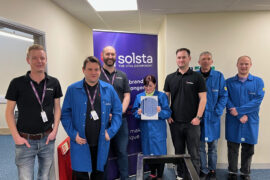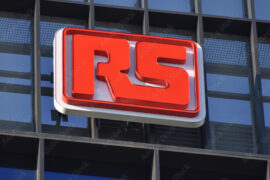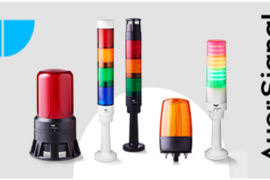Nexus GB will be showcasing its new UFX memory system, designed specifically for single board computers (SBCs), at Southern Manufacturing 2011, between February 16 and 17 at FIVE in Farnborough. The Sussex-based distributor of specialist memory storage devices, keys, tokens and receptacles will be showing its rugged, secure alternative to USBs that can interface with micro-processor computers. Nexus GB is the exclusive distributor of US manufacturer Datakey Electronics in the UK & Ireland.
Historically, Nexus’ memory tokens couldn’t be used with SBCs, because the microprocessor based systems lacked the required I2C or SPI serial interfaces, which are found in micro-controller devices. SBCs have PC style ports and, as such, are designed to accept conventional USB connections. The new UFX token is likely to find uses in applications ranging from ruggedised and fanless computers to embedded computers such as the PC/104 form factor.
The UFX token, which is part of Nexus’ RUGGEDrive™ range, connects with an SBC by using specially designed electrical modules, compatible with USB ports. These come in the form of a series of receptacles, suited for different SBCs. In order to interface with the UFX drive, the receptacle has a header connector at one end and a USB connecter at the other.
The UFX memory token is a logical choice for applications that can only accept USB flash drives and use higher-level operating systems like Linux or Windows XP. The token also caters for application software and updates, which are often much larger than micro-controller firmware can handle.

“This ability to interface with SBCs expands the RUGGEDrive™ line’s potential enormously,” remarked Victoria James, Nexus GB’s marketing and PR director. “However, I think it is helpful to understand the difference between a microprocessor and a microcontroller, as even in the electronics industry these terms are sometimes used interchangeably. A microcontroller can be defined as a micro computer on an integrated circuit containing a processing core, memory and programmable I/O. It’s normally incorporated into a PCB design that will be used for a specific embedded application.
“In contrast, a microprocessor is a micro computer on an integrated circuit containing a processing core, where memory and peripherals are typically external to the IC. Microprocessor-based computers are often general purpose in nature, able to run various applications by simply adding different software.” concluded James.







Comments are closed.